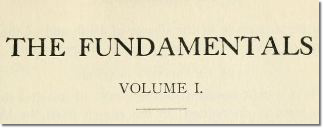The History of the Higher Criticism
 [node:22019 collapsed body]
[node:22019 collapsed body]
CHAPTER VI. THE HISTORY OF THE HIGHER CRITICISM.
BY CANON DYSON HAGUE, M. A., RECTOR OF THE MEMORIAL CHURCH, LONDON, ONTARIO. LECTURER IN LITURGICS AND ECCLESIOLOGY, WYCLIFFE COLLEGE, TORONTO, CANADA. EXAMINING CHAPLAIN TO THE BISHOP OF HURON.
What is the meaning of the Higher Criticism? Why is it called higher? Higher than what?
At the outset it must be explained that the word “Higher” is an academic term, used in this connection in a purely special or technical sense. It is not used in the popular sense of the word at all, and may convey a wrong impression to the ordinary man. Nor is it meant to convey the idea of superiority. It is simply a term of contrast. It is used in contrast to the phrase, “Lower Criticism.”
One of the most important branches of theology is called the science of Biblical criticism, which has for its object the study of the history and contents, and origins and purposes, of the various books of the Bible. In the early stages of the science Biblical criticism was devoted to two great branches, the Lower, and the Higher. The Lower Criticism was employed to designate the study of the text of the Scripture, and included the investigation of the manuscripts, and the different readings in the various versions and codices and manuscripts in order that we may be sure we have the original words as they were written by the Divinely inspired writers. (See Briggs, Hex., page 1.) The term generally used now-a-days is Textual Criticism. If the phrase were used in the twentieth century sense, Beza, Erasmus, Bengel, Griesbach, Lachmann, Tregelles, Tischendorff, Scrivener, Westcott, and

Discussion